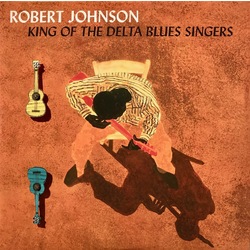Standin' At The Crossroad
Author: Bruce Jenkins Date Posted:17 March 2019

STANDIN’ AT THE CROSSROAD
“In folk as well as in fine art, there are especially gifted individuals who make great advances that preoccupy the less talented for generations afterward. Robert Johnson of Tunica County, Mississippi, was one of these exceptional men.”
So wrote legendary musicologist Alan Lomax in his engrossing American odyssey “The Land Where The Blues Began”. Engrossing is also a word we can apply to the story, or more accurately the mythology, surrounding Robert Johnson. Though it must be said that for all the obsessive research, remarkably little is known about the man whose modest recorded output built more of the foundation of blues rock than any other artist.
Poignantly, the key points in Mr Johnson’s history can be summarised in just a handful of dot points.
- Born May 11, 1911 in Mississippi.
- Lived a penniless itinerant lifestyle, playing throughout the Mississippi delta.
- Recorded twice, the first session being in November 1936 and the second in 1937.
- Died the following year (1938) of unknown causes (despite much lurid speculation).
- Johnson was 27 years old. His burial site is unknown.
- In 1990, Columbia Records contributed to the raising of a monument near Morgan City, Mississippi. Columbia have made very substantial profits from Johnson’s recordings.
Those are the bare facts, most of which have been disputed at one time or another and many of which have generated thousands upon thousands of words by blues scholars, Johnson fanatics, and lawyers.
The most famous story, one propagated by Son House (another blues legend) is the old Faustian legend that Robert Johnson’s surprisingly rapid escalation from mediocre musician to mesmerising performer and amazing slide guitarist was the result of an unholy deal made with that most untrustworthy dude, Mephistopheles himself. Yep, a deal with the devil. Either that, or he simply practiced like hell for two years and got really good as a result.
This is simple, powerful music. Often deceptively so. There’s a famous Keith Richard quote of him hearing Johnson play and asking who the second guitarist was. Yet as we listen now, hearing the background crackles and the thin vocal sound, it transports us to a time of poor sharecroppers, dusty roads, musicians scratching for a living like the disenfranchised folk they played for. Yet from the birth of rock, the songs of Robert Johnson have provided a cornerstone of blues-rock. Try this list of artists and the Johnson songs they’ve interpreted:
Cream—“Cross Road Blues” (1968)
Rolling Stones—“Love in Vain” (1969)
Cassandra Wilson—“Come On In My Kitchen” (1993)
Led Zeppelin—“Travelling Riverside Blues” (1969/1990)
R.L. Burnside—“Kindhearted Woman Blues” (1997)
The White Stripes—“Stop Breaking Down Blues” (1999)
That’s just a sample.
Add in The Doors, Red Hot Chilli Peppers, Fleetwood Mac, ZZ Top, John Mayer, the Blues Brothers, and a sizeable chunk of Eric Clapton’s catalogue (‘Slowhand’ has faithfully tended Robert Johnson’s grave for over five decades), and you have a truly staggering influence.
It seems the music industry is indebted to this powerful phantom of a man of whom we have but two verified portraits and who was buried in a pauper’s grave. Perhaps this is the irony of the blues—the sad music that makes us feel better—and beautifully encapsulated in a paradoxical couplet from “Kindhearted Woman Blues”:
She’s a kind hearted woman
Studies evil all the time
But here’s the thing. If you study the music of Robert Johnson, your appreciation of rock music will be enhanced—it really is as simple as that. In fact, you can bet your soul on it.
Bruce Jenkins © 2019

